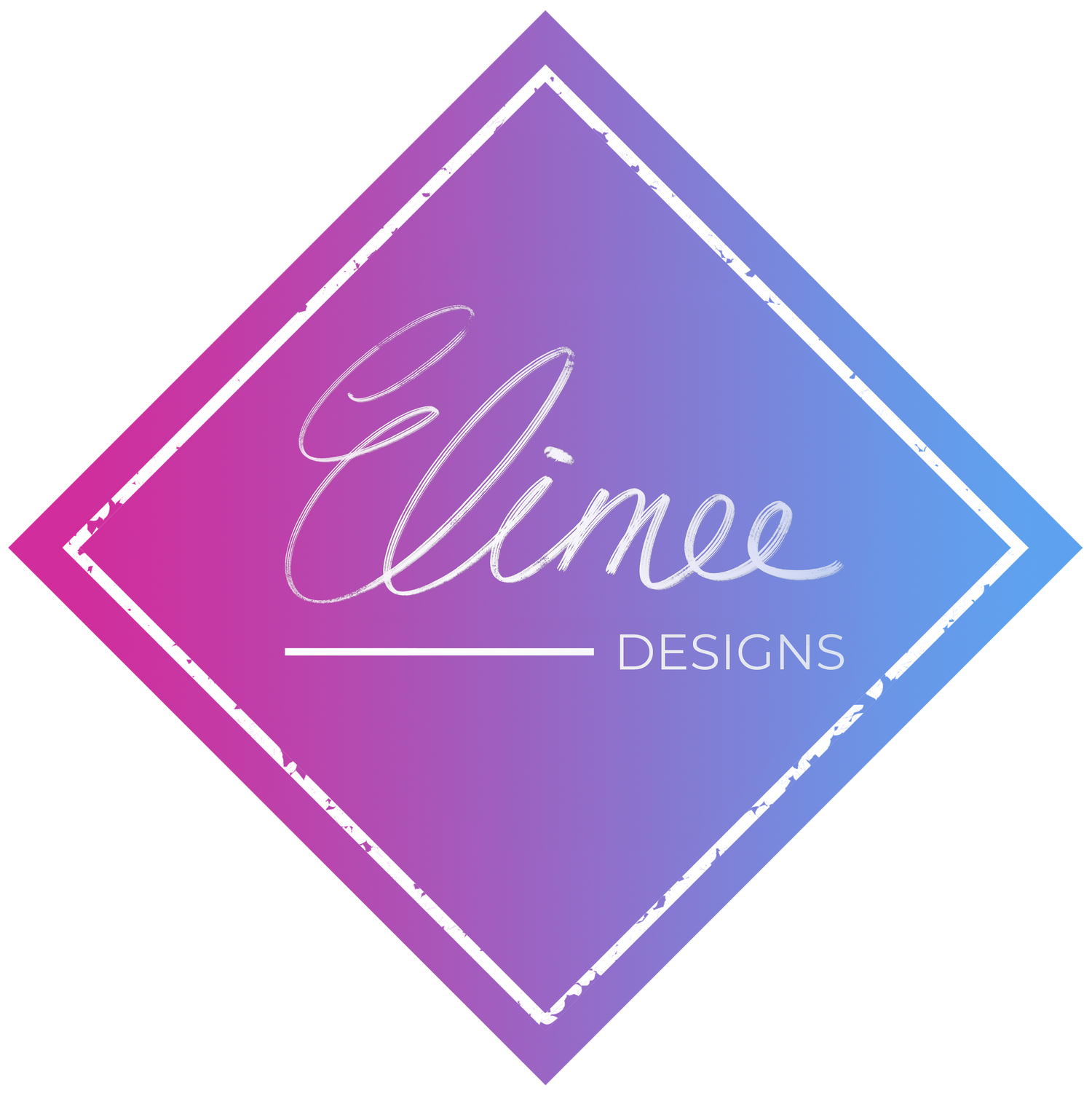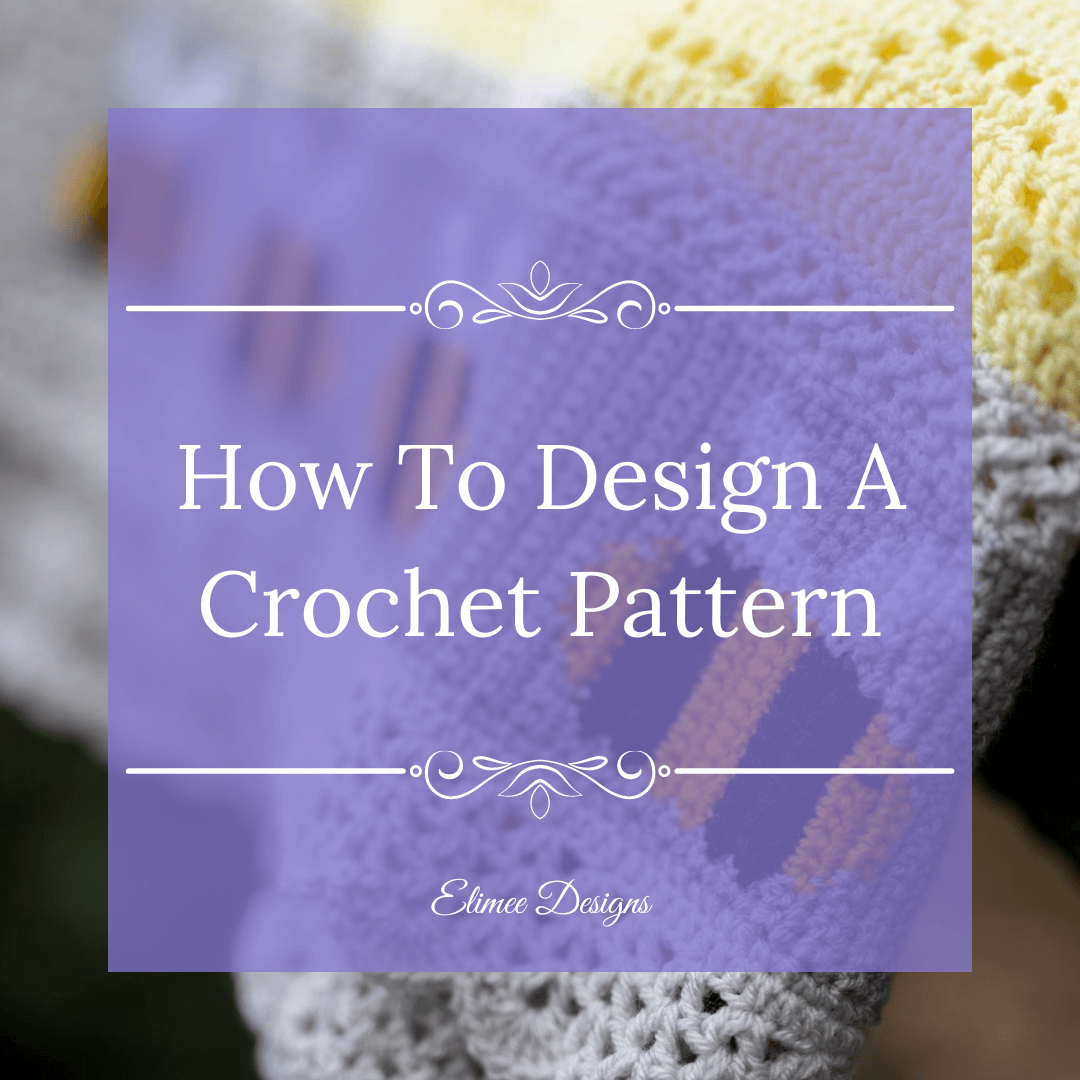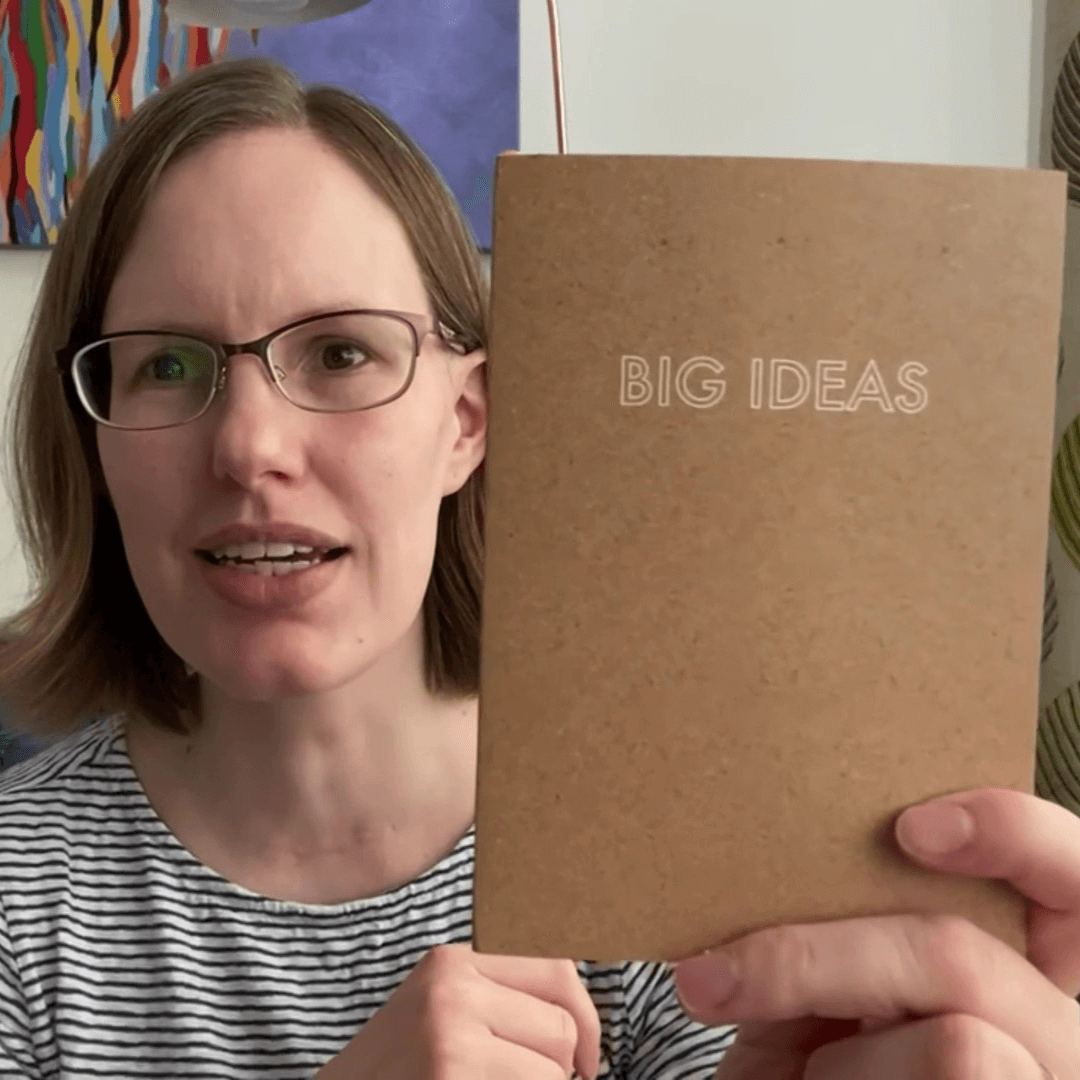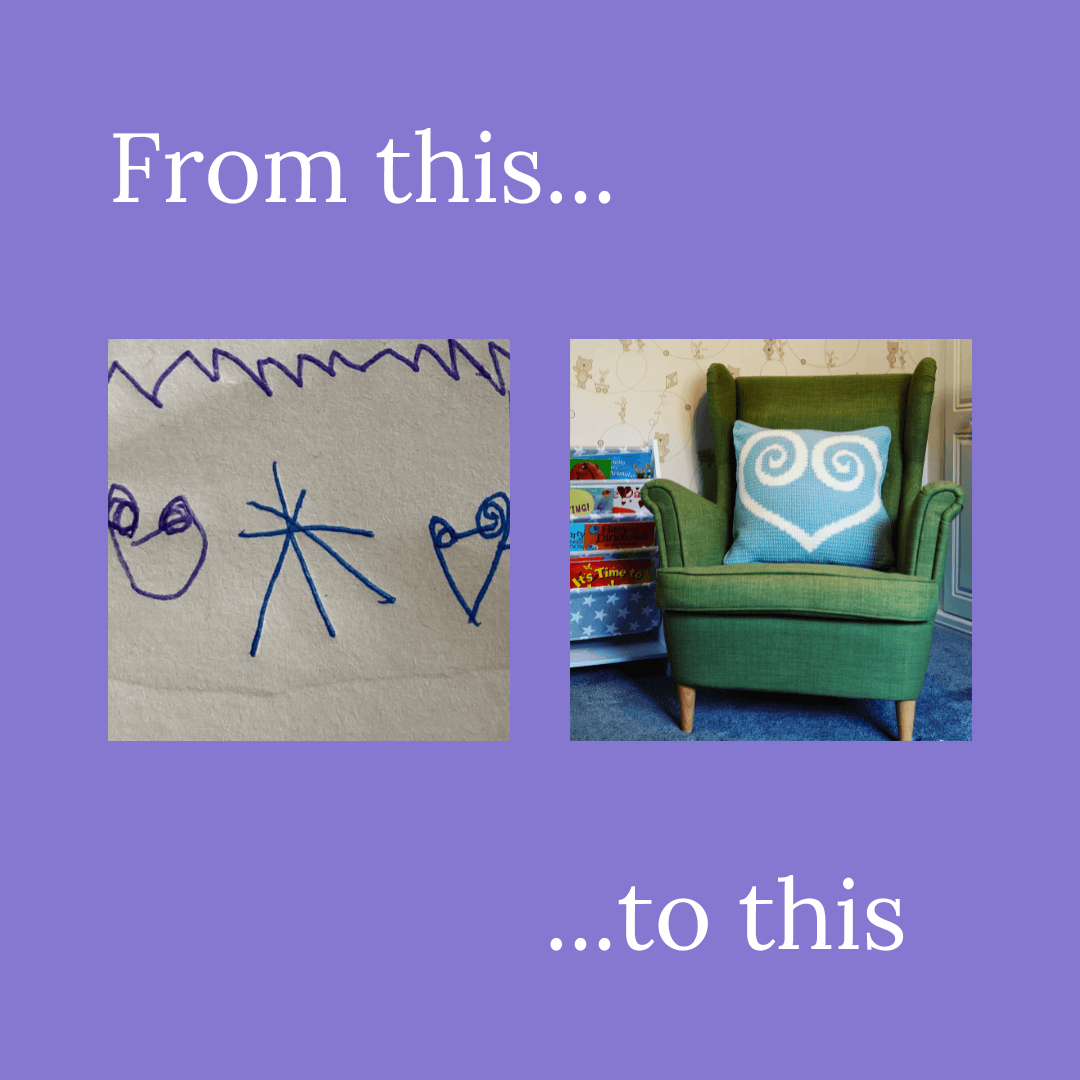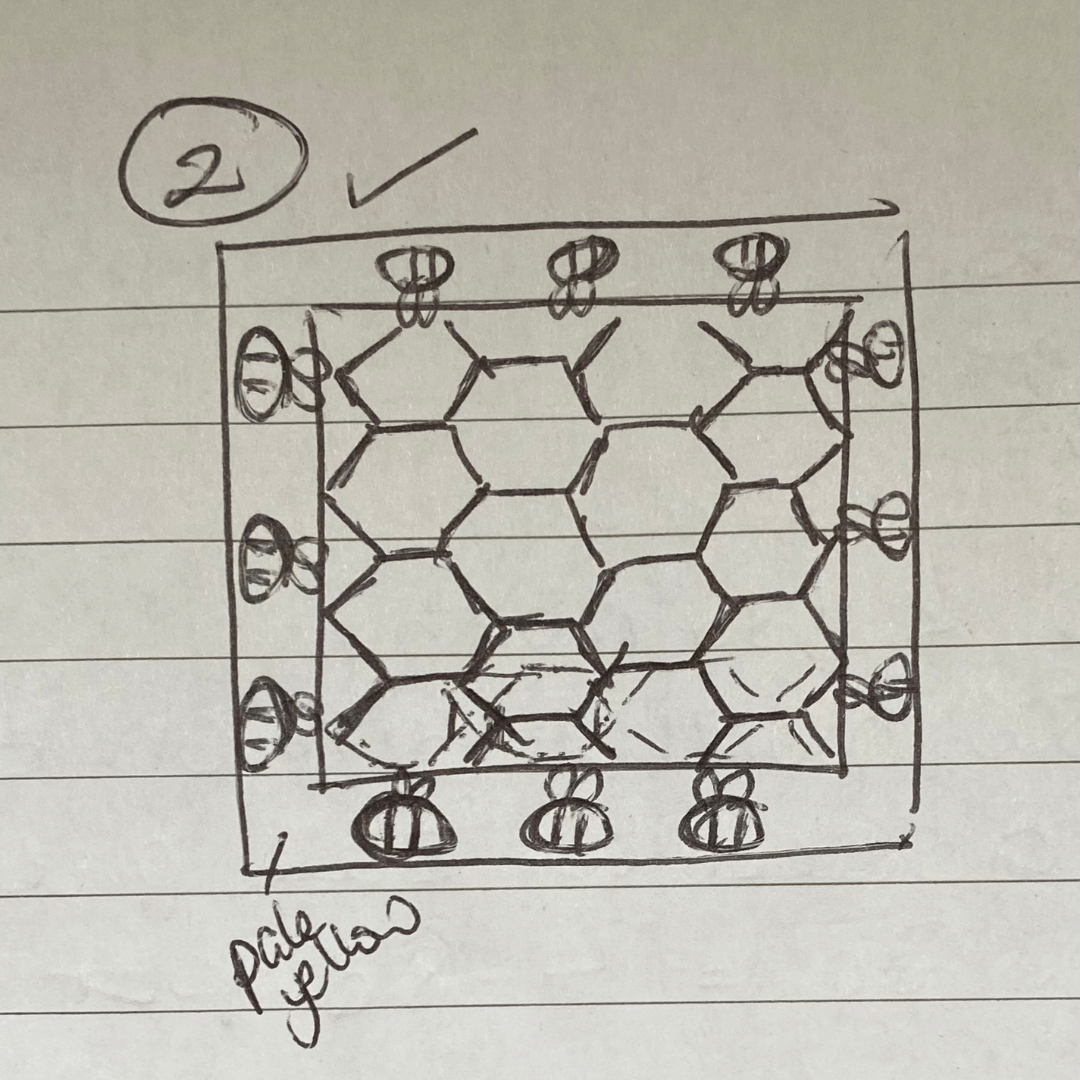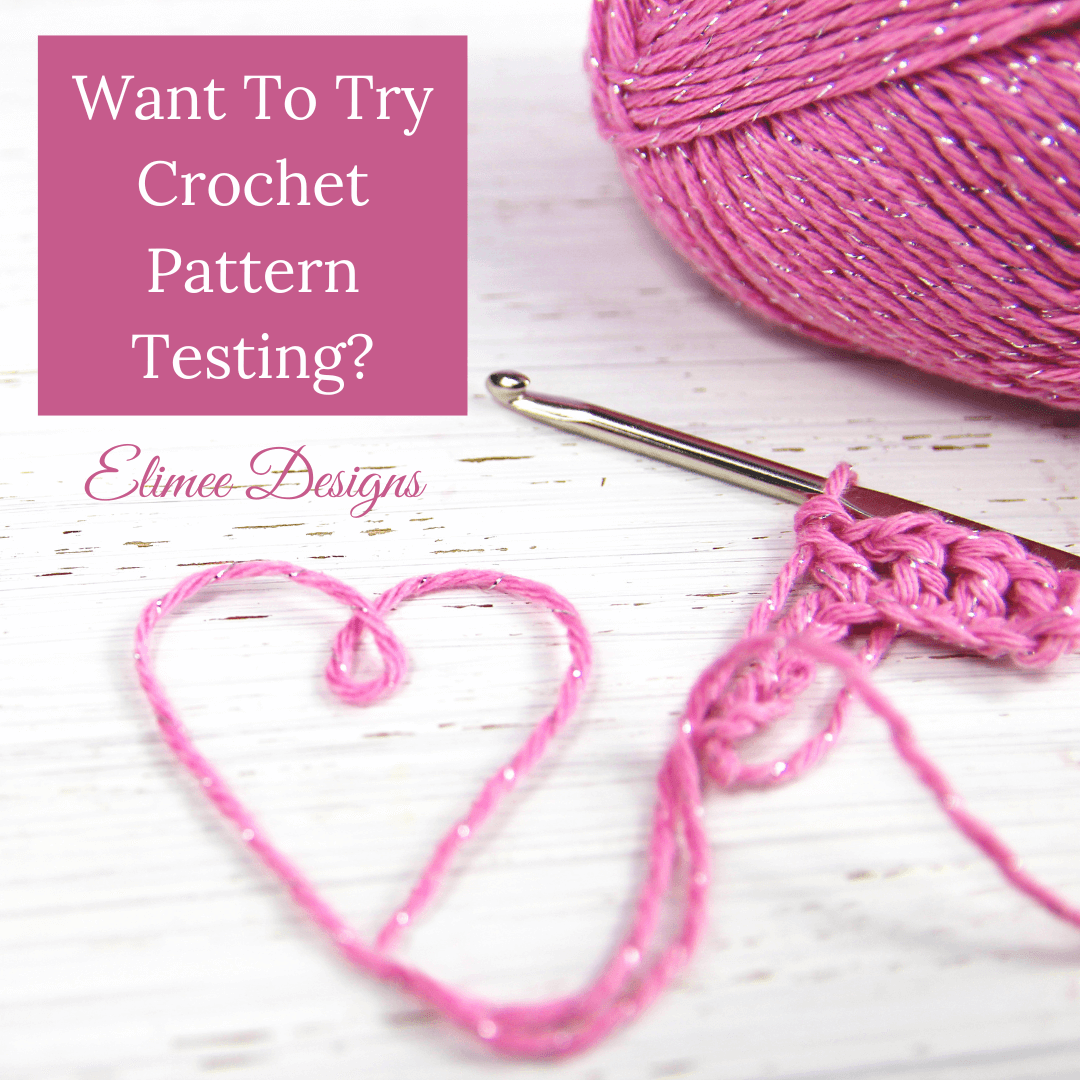How To Design A Crochet Pattern
Today, as per the request of my newsletter subscribers, I’d like to share my process for designing a crochet pattern with you. Before we get started, I want to make it clear that this is my personal process, and that other designers may have different approaches that work better for them. That said, I've found this process to be effective for me, and I hope that you'll find it helpful as well.
As a crochet enthusiast, one of the things I love most about creating my own patterns is the sense of pride and accomplishment that comes from finishing a project and knowing that I made it from scratch. There's nothing quite like the feeling of holding a finished item in your hands and knowing that every stitch was designed and crocheted by your own two hands.
If you're new to crochet, you may be wondering whether designing your own patterns is something that you can do. I'm here to tell you that there's nothing stopping you from giving it a try! Whilst your level of experience may affect which types of patterns you feel comfortable designing, it doesn't prevent you from creating your own designs entirely.
So, if you're ready to dive in and start designing your own crochet patterns, I encourage you to give it a go. You might just be surprised by how much you enjoy the process, and who knows – you may just create something truly beautiful and unique. Without further ado, let's get started on designing your very own crochet pattern!
If you’d like to come back to this post later simply pin the image below :)
***This page may include affiliate links - this means that I may earn a small commission if you purchase the product. This is at no additional cost to you. I will only recommend products that I have tried and tested myself, and that I like using. This income helps me to keep designing quality crochet patterns for you.***
Inspiration
A still from episode 10 of the Elimee Designs video blog.
Finding inspiration is a crucial part of the design process, and everyone has their own unique ways of finding it. For me, inspiration can come from a variety of sources, and it often strikes at unexpected times e.g. when I’m half asleep and feeding the baby in the middle of the night lol. Whether I'm brainstorming ideas for a specific project or just letting my mind wander, I've found that inspiration can come from the most unlikely of places.
One way that I often find inspiration is by simply immersing myself in the world of crochet. This could mean scrolling through social media, browsing through magazines and books, or attending local craft fairs and events. Seeing the work of other crocheters can often spark new ideas and give me the motivation I need to start working on a new project.
Another way that I find inspiration is by taking a break and letting my mind wander. Sometimes when I'm feeling stuck or uninspired, I'll step away from my crochet work and distract myself with another task, like going for a walk or doing some household chores. This can often help to clear my mind and allow me to see things from a new perspective.
FYI – it is important to select an activity that you can do on autopilot so that your mind is free to wander.
Of course, as a busy mom, I also have to be prepared for inspiration to strike at any moment, even when I'm not actively seeking it out. This is why I try to always keep a notebook handy to jot down any ideas that come to me, no matter how random or fleeting they may seem. This does not always work however as I have to defend my notebook from my minibeasts (AKA children) who want to draw all over it! Although, as in the case of my daughter's doodles, sometimes this works out in my favour – this is how the Aphrodite cushion cover and Aphrodite C2C blanket came to be.
In the end, the key to finding inspiration is to stay open-minded and always be on the lookout for new ideas. Whether it's through immersing yourself in the world of crochet or simply taking a break and letting your mind wander, you never know where inspiration might strike. So, keep your notebook handy, and be ready to capture those creative ideas whenever they come!
Sketching
The next step in my crochet design process is sketching, which plays an important role in visualising and refining my ideas. Sketching can sometimes overlap with my inspiration process, as I find that drawing an idea can be more efficient than writing it down. However, if I'm unable to sketch at the time, I will make sure to write down detailed descriptions of my ideas on my phone. Although I am not a skilled artist, I find that even simple line drawings can be incredibly helpful in conveying my ideas and working out any design issues before I start the actual crocheting process.
When I begin sketching, I typically have a general idea of what I want to create based on my earlier inspiration notes. From there, I'll experiment with different layouts, variations, and colour schemes until I arrive at a design that feels just right. Sometimes, I'll sketch a design several different ways before I find the perfect composition. Other times, I'll have a clear and distinct vision in my mind that requires no additional modification or adaptation. Each design takes its own unique journey through my creative process, and I find that sketching is a crucial step in that journey.
An early sketch of the Waggle Dance Bee Blanket.
Swatching
The next step in my crochet design process is swatching. Depending on the project, I may or may not create a swatch, as it's not always necessary for my design process. However, there are times when creating a swatch is essential, such as when trying to determine if a design feature will work, or when accuracy in sizing is crucial.
For projects where sizing is important, I highly recommend blocking your swatch before calculating gauge measurements and grading the pattern. Even a small difference in gauge can have significant implications on the final size of the project. I also recommend making a good-sized swatch (at least twice as big as your planned gauge square), as tension can vary between the starting and ending rows of a project.
While swatching may seem like an unnecessary step for some crocheters, I find that it can be incredibly helpful in ensuring that my designs will turn out just as I imagined. Swatching allows me to test out different stitches, colour combinations, and design elements before committing to the full project. It can also help me avoid any potential issues or mistakes that might arise during the actual crocheting process.
FYI only for two of my current sixteen available patterns did I make a swatch.
Writing the Pattern
Writing the pattern is the most technical aspect of designing a crochet pattern. It involves creating a clear and concise set of instructions that anyone can follow, regardless of their crochet experience. The first step is to break down the design into its component parts, determining the stitch counts, the order in which the stitches are worked, and any special techniques that may be required. This involves a lot of trial and error, as well as a good deal of maths to ensure that the pattern will be both visually appealing and ‘structurally’ sound.
Once I have a solid understanding of the design, I will usually start by creating an outline of the pattern, breaking it down into sections and subsections as needed. From there, I will begin filling in the details, starting with the introductory sections such as materials and gauge, and then moving on to the actual instructions for each section of the pattern.
One of the most important aspects of writing a crochet pattern is to be as clear and precise as possible. This means using standard abbreviations, providing detailed explanations for any unusual or tricky techniques/stitches, and including photos and/or diagrams to help the reader to understand what they need to do at each step of the pattern. I always strive to write my patterns in a way that makes them accessible to as many people as possible, regardless of their skill level or previous experience with crochet.
Crocheting the Sample
Crocheting a sample is my favourite part of the design process. It's when I get to dig into my stash of yarn, grab a hook, and let my creativity flow. Admittedly, at present, this is often a slower process than I would like due to my busy schedule. Raising three small children, maintaining a house, and working a day job (although I am currently on maternity leave) means that my crochet time is often limited. But when I do get a chance to crochet, it's my opportunity to have some me time, zone out, and de-stress from daily life. This is why I fell in love with crocheting in the first place!
Depending on the size of the pattern and how many variations I am offering within the pattern, sometimes I will only crochet one sample, while for others, I will make several. For instance, when designing the Caitlin Zigzag Blanket, I only had to make one sample, while for the Twisted Trio Ear Warmers, I had to make six - one for each motif included within the pattern (as well as some plain sizing samples). I also find that sometimes I need to adjust the pattern as I go along, so having multiple samples can be helpful in determining the best design.
Overall, crocheting a sample is where my vision for the design comes to life. It's exciting to see the yarn transform into the actual item I've been envisioning in my head. I also enjoy playing around with different colours and stitch combinations during this stage, which can lead to unexpected but delightful results. Crocheting samples can be time-consuming, but the end result is always worth it.
Check out the Elimee Designs video blog if you’d like to see some of the patterns that I’m working on :)
Testing
The testing phase is a critical step in the pattern designing process. It is an opportunity for me to receive feedback from a group of experienced crocheters who will follow the written pattern and provide feedback. This stage of pattern development is essential because it allows me to refine the pattern and catch any errors that I may have missed. It can also help me identify parts of the pattern that may be confusing to the reader, and areas where additional explanations or visual aids may be necessary.
Finding reliable testers can be a challenge, but I have been fortunate to have a group of testers who have been with me for some time. These testers are individuals who have experience in crochet and pattern testing and who have a keen eye for detail. I appreciate the time and expertise they provide and ensure that I am kind and respectful towards them throughout the testing process – a good tester is worth their weight in gold!
Once I have recruited my testers, I provide them with a deadline to complete the pattern and instructions on what to look for during the testing process. I also make myself available to answer any questions that may arise. The feedback from my testers is invaluable, and I take the time to review their comments and make any necessary changes to the pattern.
Overall, the testing phase is a critical part of the pattern designing process. It helps me ensure that the pattern is clear, concise, and easy to follow. It also provides an opportunity for me to build relationships with other crocheters who share my passion for the craft.
If you’d like to learn more about becoming a pattern tester you can check out our blog post HERE. Or, if you’d like to try testing for Elimee Designs you can sign up to receive our tester calls below.
Editing
Editing is an important phase in the pattern design process because it allows me to refine my pattern based on the feedback and suggestions provided by my testers. This includes fixing any errors or mistakes, clarifying any confusing instructions, and adding any helpful tips or additional information that might enhance the user experience. I take this step very seriously because I want to provide my customers with the best possible pattern, and I believe that this level of attention to detail is what sets my patterns apart from others.
In addition to addressing any issues raised by my testers, I also use this phase to add visual elements to the pattern, such as photos and video tutorials. I find that including these types of materials can be incredibly helpful for crocheters who are visual learners or who may need additional guidance. I also take the time to "brand" the pattern file by adding my logo and other design elements, which helps to make it more professional-looking and consistent with my other patterns.
Overall, the editing phase is an essential part of the pattern design process because it allows me to take a step back and really evaluate my work with fresh eyes. It's always helpful to have other people look at your work and provide feedback, and I find that this phase really helps to refine my patterns and make them the best they can be.
Pattern Launch
The launch of a new pattern is a bit like a birthday or holiday. I always try to have an exciting build up to the day and hope that people will like what I've created. It's a wonderful feeling when someone buys my pattern or shares photos of their finished makes on social media. It's a privilege to see the work of other crocheters and to know that I played a small part in their creation.
Launching a pattern can involve a lot of work behind the scenes. There are the photos to take, editing the pattern file, writing a blog post and email newsletter to promote the launch, updating my website and social media pages, and ensuring that I have adequate customer support. It can be a bit overwhelming at times, but I find that it's worth it to see my pattern out in the world.
FYI - I currently share my patterns on Ravelry, Etsy and Lovecrafts. I use Mailerite to send out my newsletter, Tailwind to schedule my Pinterest pins, Buffer to schedule my social media posts and Canva to create my graphics. If you’d like some tips on photographing your crochet projects you can check out our blog post HERE.
One of the best parts of launching a pattern is the sense of community that comes with it. I love connecting with other crocheters, sharing tips and tricks, and seeing how they interpret my designs. It's amazing to see how people can take a simple pattern and make it their own, adding their own touches and making it unique - you can find photo examples of this within our Facebook group HERE. It's this sense of connection and creativity that keeps me inspired to design new patterns.
At the end of the day, launching a pattern is about sharing my passion for crochet with others. It's about creating something beautiful and functional, and inspiring others to do the same. I am grateful for the opportunity to do what I love and to share it with others.
In conclusion, the process of designing a crochet pattern is a complex and rewarding one. It starts with inspiration, followed by sketching and planning, swatching, writing the pattern, crocheting a sample, testing, editing, and finally launching the pattern. Through this process, I have found that having a solid plan and organisation in place, whilst also remaining flexible and open to feedback, is crucial.
Designing crochet patterns allows me to express my creativity and share my love of crochet with others. It can be challenging, but it is also very fulfilling to see a design go from an idea to a finished product. As a designer, I have also had the opportunity to connect with and learn from other designers and crocheters in the community, which has been an invaluable experience.
I encourage other crocheters to have a go at designing and sharing their designs with the crochet community. It can be daunting at first, but there is so much to gain from taking that step. Whether it's through social media, Ravelry, or other platforms, there is a community of crocheters out there who are eager to see what you have to offer. Remember, together we thrive - #communityovercompetition. So let's create, share, and inspire each other.
If you're a future crochet pattern designer who wishes to start a crochet business I recommend that you check out the Crochetpreneur Business Academy (CBA). As a member of CBA, I can personally attest to the amazing benefits that come with being part of this community. That's why I wrote a blog post about why I joined CBA and how it has helped me achieve my business goals. If you're interested in learning more about CBA and how it can benefit your crochet business, then I encourage you to check out my post. Whether you're just starting out or have been in the industry for a while, CBA can provide you with valuable insights, strategies, and resources to help you succeed. So don't miss out on this opportunity - head over to my blog post and learn more about how CBA can help you take your crochet business to the next level!
Comment below to tell me about your pattern designing process. Are there any key elements that you do differently?
